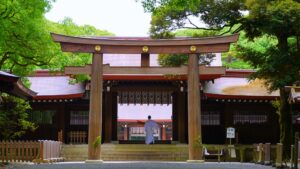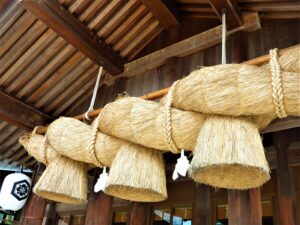Izumo Taisha Shrine: The Heart of the Japanese People at Kamiari-sai Festival
The Kamiari-sai is an annual festival held at Izumo Taisha Shrine, taking place in October according to the lunar calendar. In the year 2023, it’s scheduled from November 22nd to the 29th. The festival is staged to welcome the deities from the nation, and it commences at Inasa-Hama shore, which is situated approximately a 20-minute stroll to the west of Izumo Taisha. Subsequently, the deities concealed behind a silk curtain proceed to Izumo Taisha, guided by Ryuja or a snake deity. They remain at the shrine for a duration of seven days, engaging in various sacred and spiritual activities that are concealed from human eyes. It’s said that the deities hold a conference to discuss a person’s peaceful connection with others, including familial ties, friendship, business collaborations, and even marriage. Izumo is a special place where the deities surpass that of mortals in our world, and it serves as the birthplace of many myths and legends.

(Source: Izumo Taisha / 写真提供:出雲大社)
Sunset at Izumo and Sunrise at Ise: The Cycle of Life in Death and Rebirth
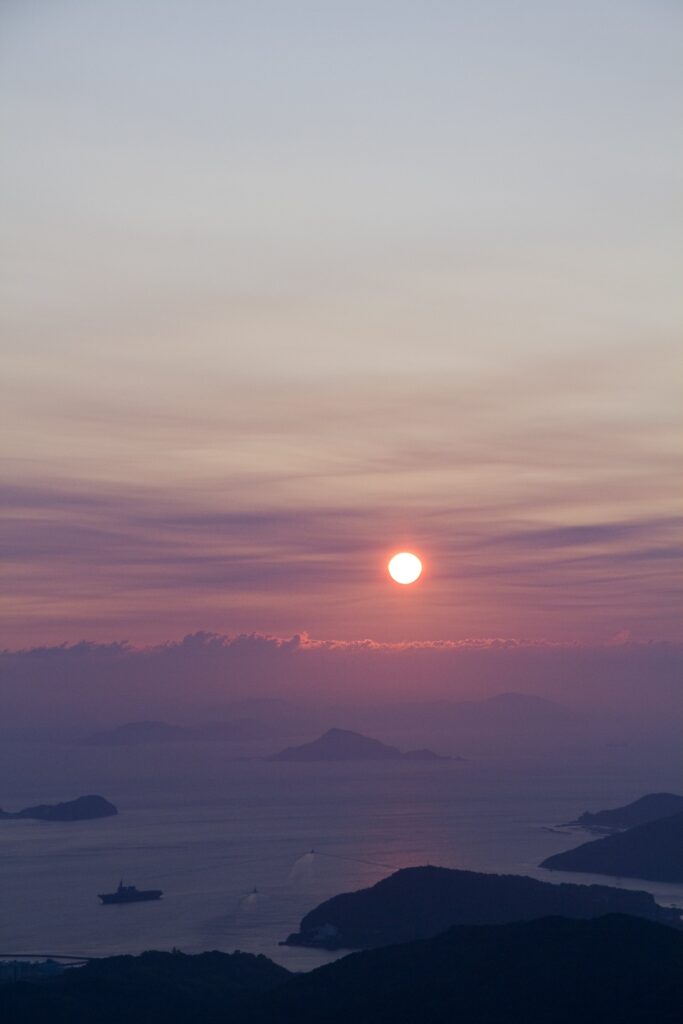
(C)”Visit ISESHIMA” Bureau
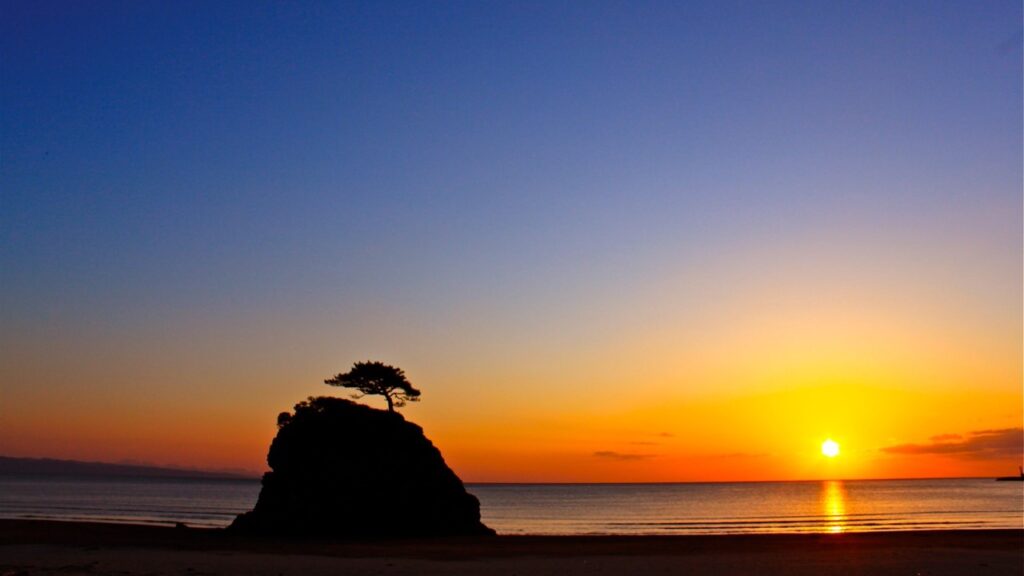
Sunset at Inasa-Hama shore
Izumo Taisha stands as one of Japan's most revered shrines alongside the esteemed Ise Jingu Shrine. This is owed to its holly role in Shinto's sacred affairs known as "Kakuriyo" since the ancient days. "Kakuriyo" is a world not visible to the human eye, often likened to the world beyond mortality, and something supernatural. Situated northwest of Yamato, the ancient capital of Japan in Nara prefecture, the Sea of Japan's sunset at Inasa-Hama shore is sacred, and no words to express its beauty. The sun setting is interpreted as hiding underground, which is mandatory for the regeneration of a new sun or a new life on the line of the sun’s operation or east-west axis in ancient days. Japanese people placed great importance on the attribute of being hidden (hidden beauty or subtle grace) because of this. Izumo Taisha is also called “Ameno-hi-Sumi-no-miya” (a shrine built in the area where the sun sets beautifully). Conversely, in the southeast of Yamato, close to the Ise Bay, Ise Jingu Shrine, which enshrines Amaterasu, the sun deity, is the place of the sacred sunrise over the glistening sea. Since ancient times, people have attached great importance to the sun because of the concept of rebirth of life: the setting sun symbolizes the sacred transition into the "Kakuriyo," while the rising sun marks the hallowed birth into this world.
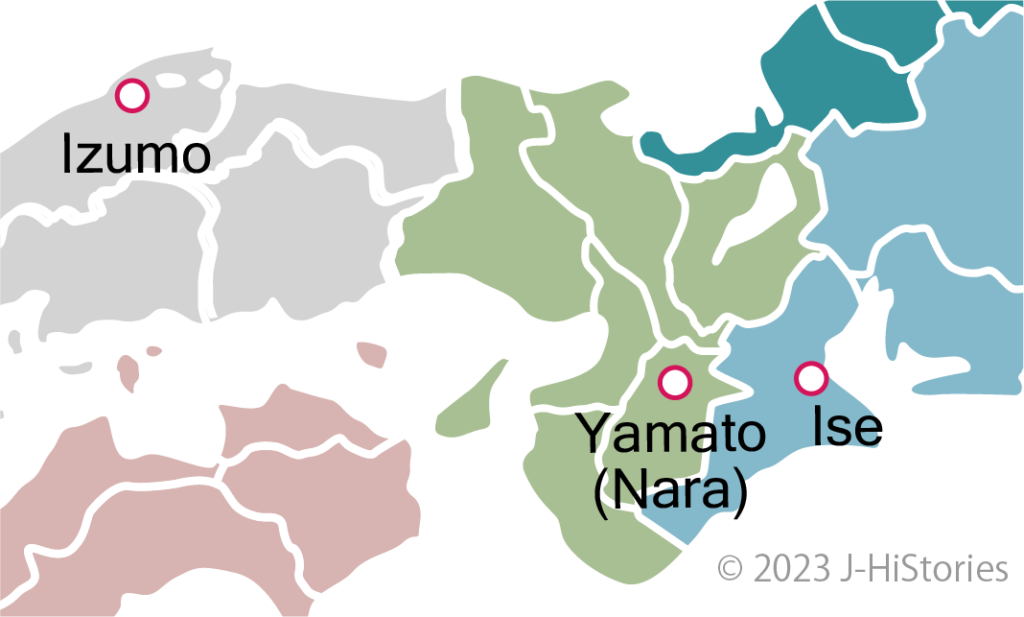
"Revived" Every 60 years. We, too, Receive New Power from its Deity, Okuninonushi
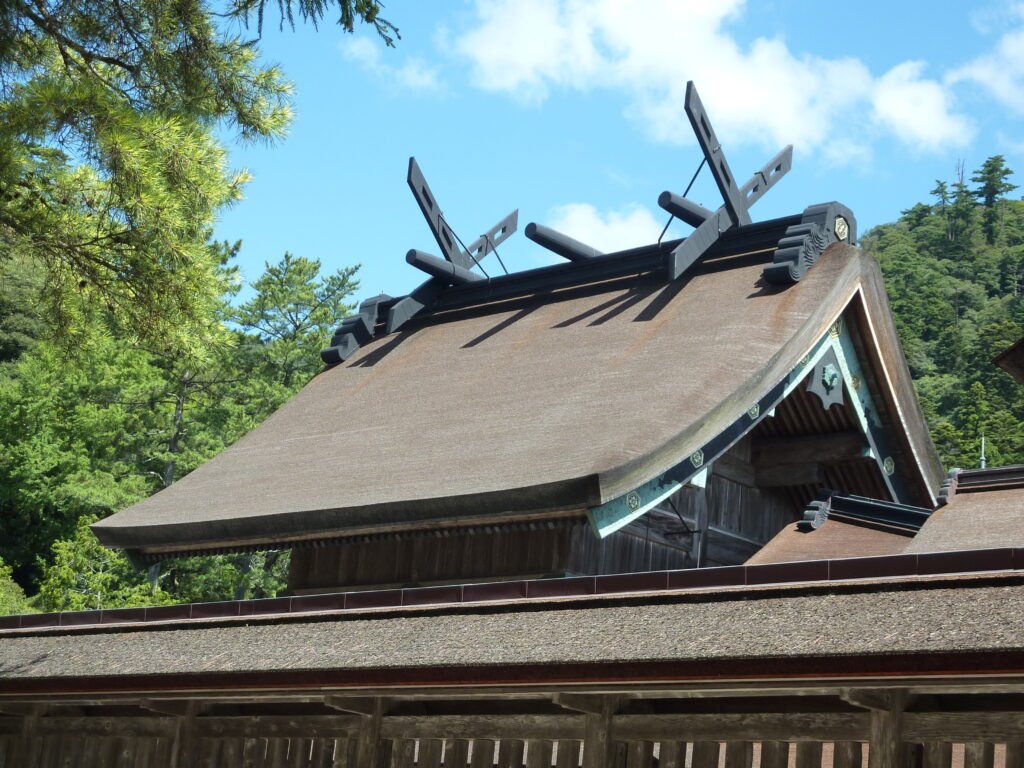
(Source: Izumo Taisha / 写真提供:出雲大社)
Izumo Taisha Shrine has held the “Sengu” ceremony approximately every 60 years since 1609 to renew the shrine’s physical structure, including a new shrine, and to transfer the main deity, Okuninonushi, from the old main hall to the new one. This significant ritual serves a profound purpose, beyond the mere reconstruction of the wooden building; it is aimed at revitalizing the deity with a sense of freshness and youthfulness. Under a spiritually serene night, at 8 pm, the Gujim, the chief of Izumo priests, recites the Norito, Shinto prayers, to herald the deity’s return to the newly constructed main hall. As all lights are turned off, the ceremony unfolds in an atmosphere of deep reverence. The object of Okuninonushi’s worship, carried within a Mikoshi (portable shrine) enveloped by white silk curtains, is reverently transported to the new main hall by many priests, 300 in total. Their footsteps were only illuminated by low-lit lanterns. Okuninonushi enters the main hall once it has circled it. Subsequently, the Guji offers expressions of reverence and prays for the prosperity of the Emperor and Imperial family, nation, and people’s happiness. The ceremony spans two and a half hours from inception to conclusion. The rebuilding of the shrine extends far beyond material considerations; it lies in the rejuvenation of the deities in the new shrine, thereby ensuring the continuity of their eternal life. We, as human beings standing in front of these deities, also receive the power of regenerated new life.
Izumo Taisha Shrine is A Place to Meet the Deities
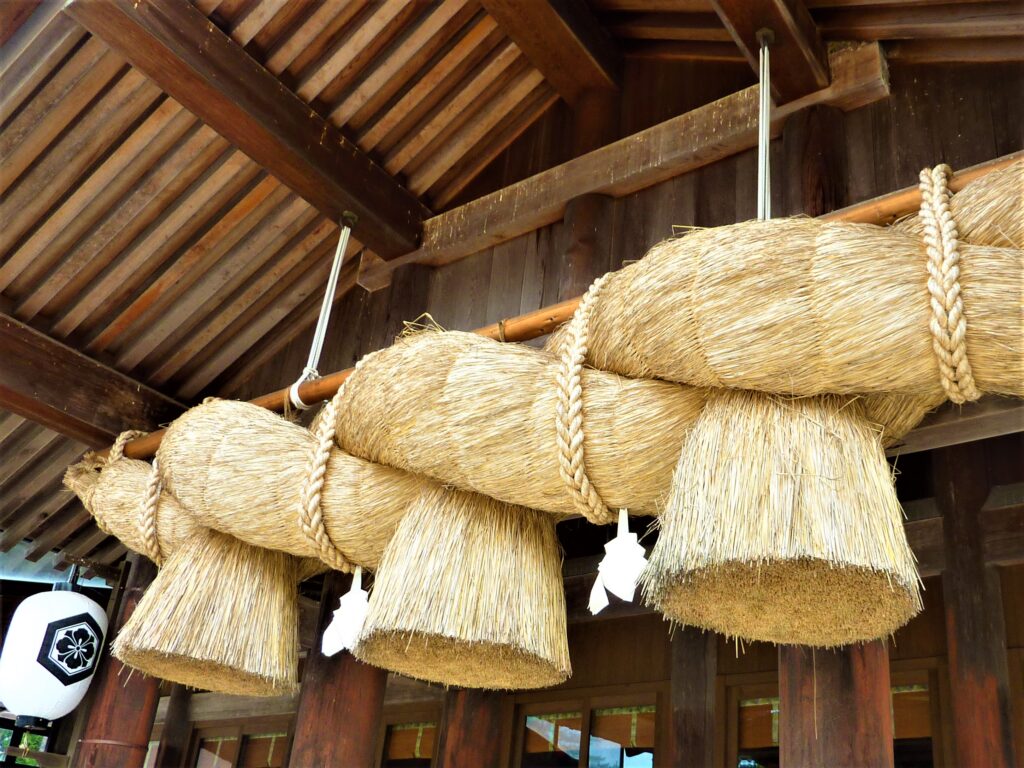
(Source: Izumo Taisha / 写真提供:出雲大社)
Following the conclusion of Kamiari-sai, the deities commence their journey back to their individual countries. Their departure from Izumo Taisha is marked by the utterance of "Otachii, Otachii," and they embark on their return after partaking in a "Naorai" banquet. Izumo Taisha stands as the sacred meeting ground with the divine, a place where people can connect with the sacred energy of Okuninushi. I encourage you to savor the experience of visiting Izumo Taisha, where you can immerse yourself in the sacred experience of Japanese people. It's an opportunity to offer prayers and make wishes for good fortune at Izumo Taisha. The next Sengu festival is anticipated around the year 2068, but unknown. In the interim, you can partake in the annual Kamiari-sai, which allows you to continue enjoying the rich traditions of this sacred place.
Recommendations to visit
Izumo Taisha Shrine
- Access (Train): 25 minutes from JR Izumoshi Station. Take Ichinata Bus to "Seimon-mae (正門前)," then a 10-minute walk to Kawato Station. 11 minutes train to "Izumotaisha-mae (出雲大社前)"
- Access (Air/Bus): 1 hour from Izumo Enmusubi Airport to Izumo Taisha by Ichibata Direct Bus
Shimane Museum of Ancient Izumo
- Access: 7-minute walk from Izumo Taisha Shrine

